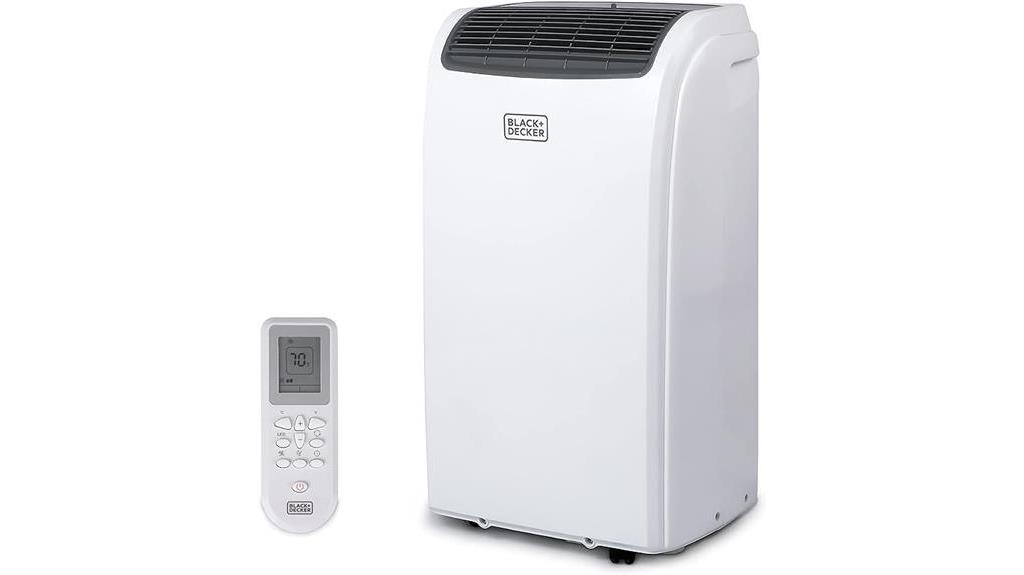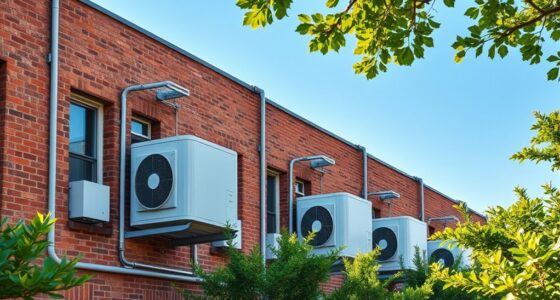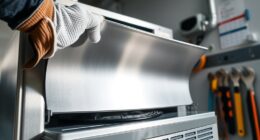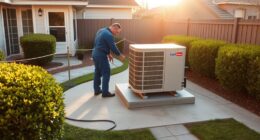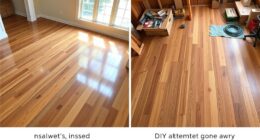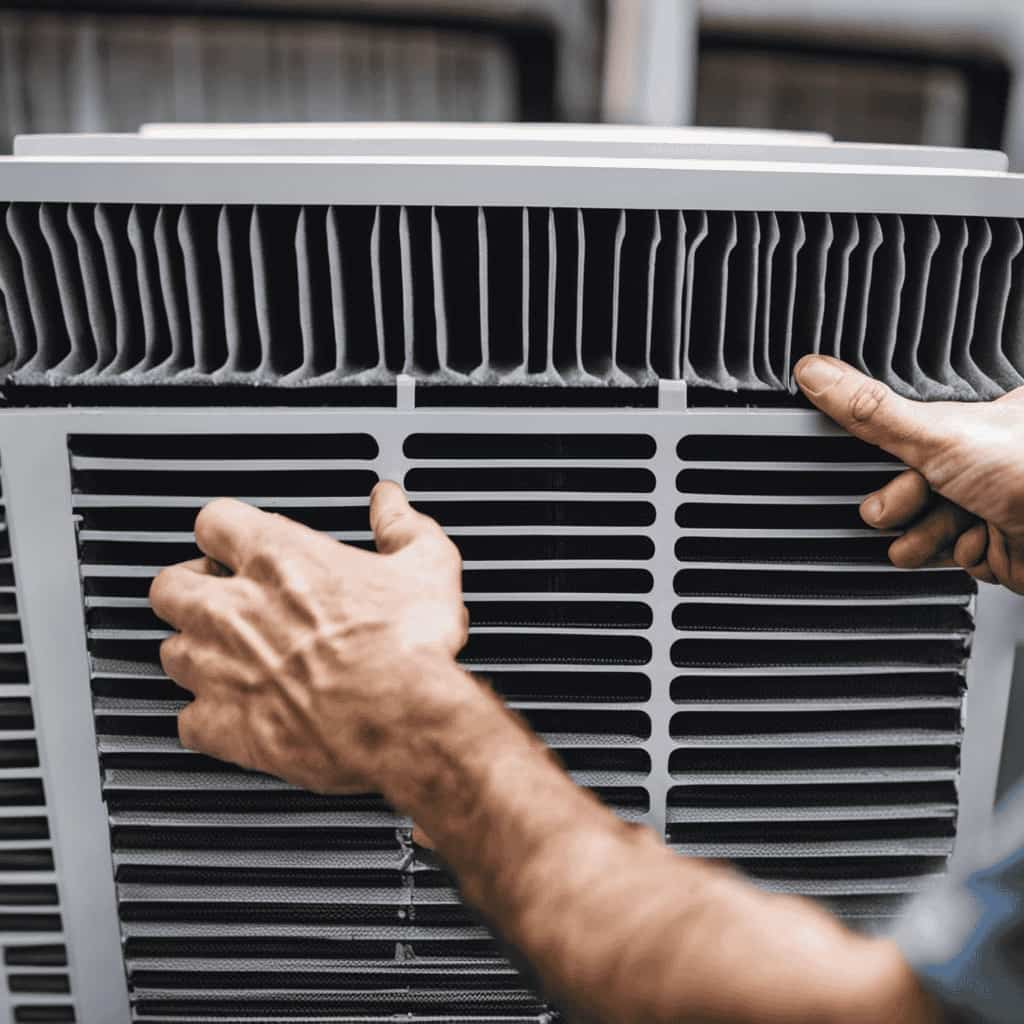
Through our experience, we have learned that in order to successfully install residential heat pumps, it is essential to carefully adhere to a specific procedure.
In this article, we’ll guide you through the eight essential steps to ensure efficiency and customer satisfaction. From assessing the site to educating the customer, each step plays a vital role in delivering top-notch results.
So, let’s delve into the technical details and discover how we can serve you better with our expertise.
Key Takeaways
- Thoroughly evaluate the site and consider property size, layout, accessibility, and potential obstacles before installing a heat pump.
- Conduct a load calculation to determine the appropriate size and selection of the heat pump, taking into account insulation, square footage, climate conditions, and energy efficiency ratings.
- Properly design and install ductwork to ensure maximum efficiency, including sealing ducts to prevent air leakage, accurately calculating duct size, and ensuring proper airflow with minimal resistance.
- Follow safety precautions and adhere to local regulations and codes when making electrical connections and wiring, including understanding voltage requirements, using proper grounding materials, and protecting connections from moisture and damage.
Site Assessment and Preparation
Before beginning the installation process, we must assess and prepare the site. This involves conducting a thorough site evaluation to determine the best location for the heat pump system. We need to consider factors such as the size and layout of the property, the accessibility of the site, and any potential obstacles that may hinder the installation process.
Additionally, it’s crucial to inspect the equipment to ensure that it’s in proper working condition. This includes checking for any damage or defects that could affect the performance of the heat pump system.
Sizing and Selection of Heat Pump
To ensure optimal performance and efficiency, we must carefully size and select the heat pump for the residential installation. Proper sizing and selection are crucial for achieving the desired heat pump efficiency and energy savings. Here are three key considerations to keep in mind:
-
Load calculation: Conduct a thorough load calculation to determine the heating and cooling requirements of the space. Factors such as insulation, square footage, and climate conditions should be taken into account to accurately determine the heat pump size needed.
-
Efficiency ratings: Look for heat pumps with high energy efficiency ratings, such as the Seasonal Energy Efficiency Ratio (SEER) and the Heating Seasonal Performance Factor (HSPF). Higher ratings indicate greater energy savings and overall efficiency.

-
Capacity matching: Ensure that the heat pump’s capacity matches the load calculation. Oversized or undersized units can lead to decreased efficiency and comfort issues. It’s essential to select a heat pump that can meet the heating and cooling demands of the space effectively.
Proper Ductwork Design and Installation
We need to carefully plan and execute the design and installation of the ductwork to ensure efficient residential heat pump performance. Proper ductwork design and installation play a crucial role in achieving optimal energy efficiency.
One important aspect of ductwork maintenance is ensuring that the ducts are properly sealed to prevent air leakage. Any leaks or gaps in the ductwork can result in energy wastage as cooled or heated air escapes.
Additionally, the size of the ducts should be carefully calculated to match the capacity of the heat pump. Undersized or oversized ducts can lead to reduced efficiency and uneven heating or cooling throughout the house.

Properly designed ductwork also allows for proper airflow, minimizing resistance and maximizing energy efficiency. By focusing on proper ductwork design and installation, we can ensure that residential heat pumps operate at their highest efficiency, providing comfort while minimizing energy consumption.
Electrical Connections and Wiring
Now, let’s talk about the crucial aspects of electrical connections and wiring in a heat pump installation.
Proper grounding techniques ensure the safety of the system and its users, reducing the risk of electrical hazards.
It’s essential to understand the required voltage and compatibility of the heat pump with the electrical system to ensure efficient operation and prevent damage.

Additionally, following safety precautions during the installation process is crucial to avoid any potential risks or accidents.
Proper Grounding Techniques
As we move on to discussing proper grounding techniques for electrical connections and wiring, it’s important to understand the necessary steps for efficient residential heat pump installation. Grounding methods play a crucial role in ensuring the safety and proper functioning of the heat pump system.
Here are three key points to consider:
-
Follow safety regulations: When it comes to grounding, it’s essential to adhere to local safety regulations and codes. These regulations ensure that the electrical connections and wiring are installed correctly, minimizing the risk of electrical hazards and malfunctions.

-
Use proper grounding materials: The choice of grounding materials is critical for effective grounding. Copper or aluminum conductors are commonly used due to their excellent conductivity and corrosion resistance. It’s important to select materials that meet industry standards and are suitable for the specific installation environment.
-
Install grounding connections correctly: Proper installation of grounding connections is crucial for maintaining electrical continuity and minimizing the risk of electrical faults. Connections should be securely fastened and protected from moisture and physical damage.
Voltage Requirements and Compatibility
Before beginning the installation process, it’s important to understand the voltage requirements and ensure compatibility of the electrical connections and wiring for the residential heat pump. Proper voltage compatibility is crucial for the safe and efficient operation of the heat pump system.
To determine the correct voltage requirements, refer to the manufacturer’s specifications and guidelines. It’s necessary to check if the existing electrical wiring in the property meets the voltage requirements of the heat pump. If the wiring doesn’t match, it may be necessary to upgrade or replace it to ensure compatibility.

Additionally, it’s essential to ensure that the electrical connections are secure and properly insulated to prevent any electrical hazards. Hiring a licensed electrician is recommended to ensure the correct installation and compatibility of the electrical system.
Safety Precautions for Installation
Have we taken the necessary safety precautions for the electrical connections and wiring during the installation process? Ensuring the safety of electrical connections and wiring is crucial to prevent accidents and ensure the smooth operation of residential heat pumps. Here are three key safety precautions that should be followed during installation:
-
Safety Training: It’s essential for the installation team to undergo proper safety training to understand the potential risks associated with electrical connections and wiring. This training should include knowledge of electrical codes, safe work practices, and the use of personal protective equipment.
-
Equipment Maintenance: Regular maintenance of electrical equipment is vital to ensure its proper functioning and minimize the risk of electrical hazards. This includes inspecting and testing wiring, connectors, and circuit breakers to identify any signs of wear or damage.

-
Proper Wiring and Grounding: The correct installation of wiring and grounding is essential to prevent electrical shocks and fires. It’s important to follow manufacturer guidelines and local electrical codes to ensure proper insulation, grounding, and protection against overloads and short circuits.
By following these safety precautions, we can minimize the risk of electrical accidents and ensure the safe and efficient operation of residential heat pumps.
Now, let’s move on to the next section and discuss the installation of indoor and outdoor units.
Installation of Indoor and Outdoor Units
When it comes to the installation of indoor and outdoor units for a residential heat pump, there are several important points to consider.
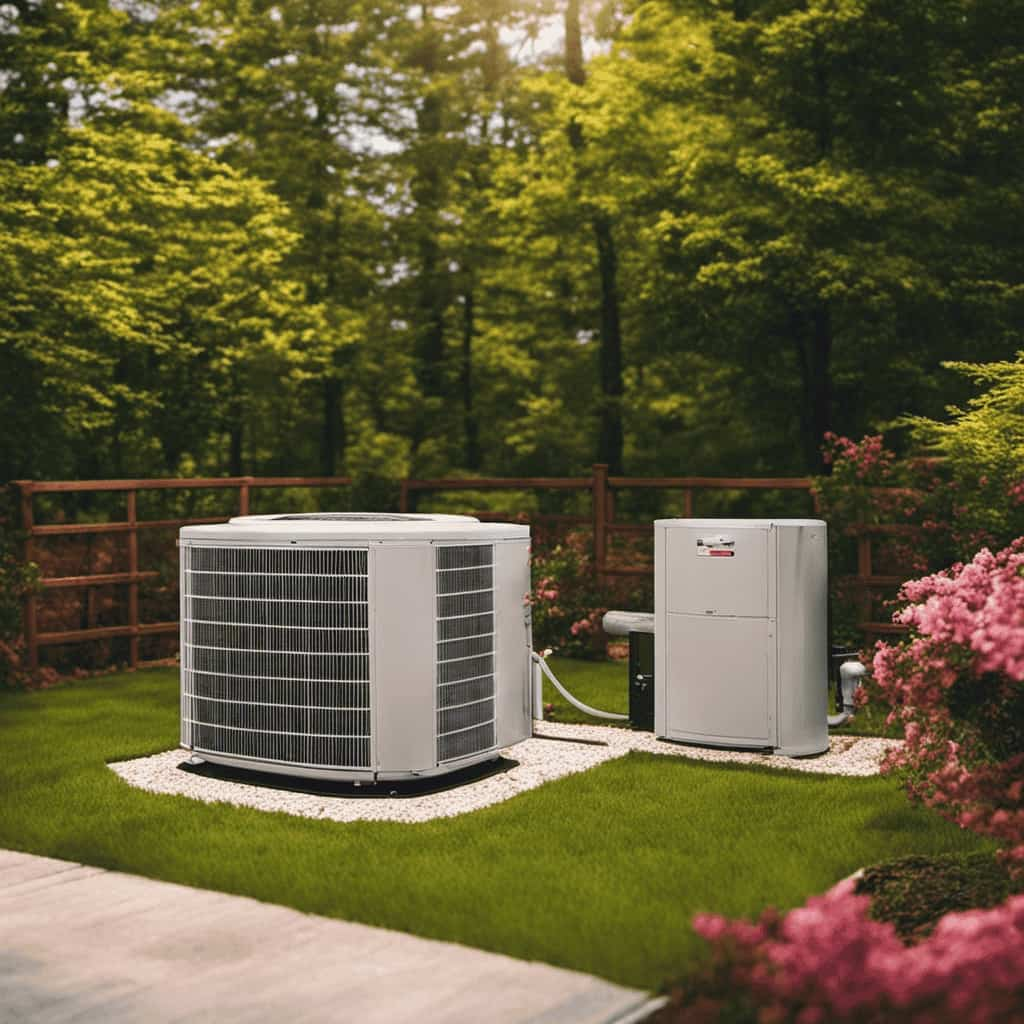
Firstly, unit placement must be carefully considered, taking into account factors such as accessibility, noise levels, and airflow.
Secondly, proper installation techniques are crucial to ensure the unit functions efficiently and effectively. This includes following manufacturer guidelines, securing the units properly, and ensuring all connections are correctly made.
Unit Placement Considerations
We must carefully consider the placement of both the indoor and outdoor units when installing a residential heat pump. Proper unit placement is crucial for the efficient operation and longevity of the system. Here are some important placement considerations to keep in mind:
-
Indoor Unit Placement: The indoor unit should be installed in a central location within the house, away from direct sunlight or heat sources. It should also be positioned in a way that allows for easy access for maintenance and repairs.

-
Outdoor Unit Placement: The outdoor unit should be placed in an area with adequate airflow and ventilation. It should be elevated to prevent water accumulation and protected from harsh weather conditions. Additionally, it should be situated away from windows, doors, and any noise-sensitive areas.
-
Distance between Units: The distance between the indoor and outdoor units should be kept as short as possible to minimize energy losses. Ideally, they should be placed within 50 feet of each other, with minimal bends and turns in the refrigerant lines.
Proper Installation Techniques
To ensure a successful installation, we must focus on utilizing proper techniques for installing the indoor and outdoor units of a residential heat pump. Proper installation of these units is crucial for the efficient operation and longevity of the heat pump system.
When installing the indoor unit, it’s important to ensure that it’s positioned correctly and securely mounted on the wall. All electrical connections should be made according to the manufacturer’s instructions. Additionally, proper maintenance techniques should be followed, such as regularly cleaning or replacing filters, to ensure optimal performance.
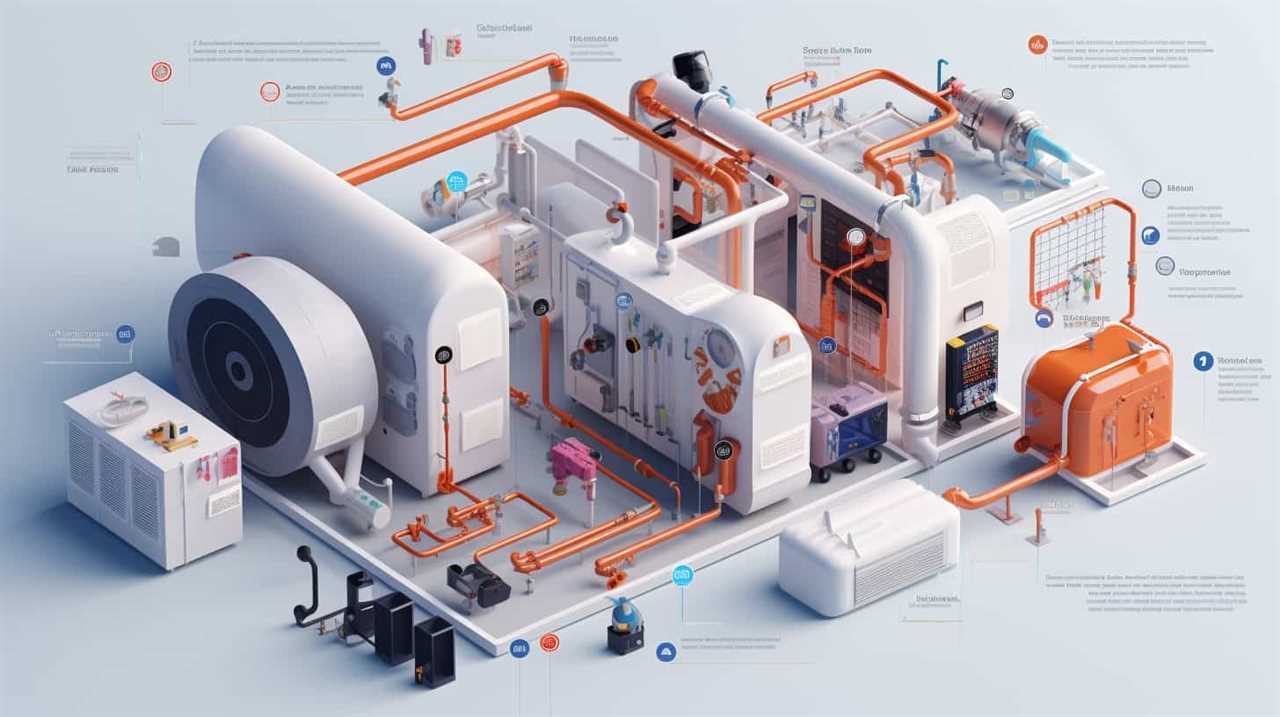
For the outdoor unit, it should be placed on a stable and level surface, away from any obstructions that could restrict airflow. The electrical connections must be properly installed, and the refrigerant lines should be properly insulated to prevent any loss of efficiency.
Refrigerant Line Installation and Insulation
We install and insulate the refrigerant lines to ensure efficient operation of the residential heat pump. Proper refrigerant line insulation is crucial for maintaining the temperature of the refrigerant and preventing heat gain or loss.
Here are three important considerations when installing and insulating refrigerant lines:
-
Refrigerant line sizing: It’s essential to choose the right size of refrigerant lines to ensure optimal heat transfer. Undersized lines can lead to increased pressure drop and reduced system efficiency, while oversized lines can result in poor oil return and decreased performance.

-
Insulation material selection: High-quality insulation materials with low thermal conductivity should be used to minimize heat transfer between the refrigerant lines and the surrounding environment. This helps to maintain the desired temperature and prevent energy losses.
-
Proper installation techniques: The refrigerant lines should be installed with care, ensuring they’re properly supported and protected from physical damage. This includes avoiding sharp bends or kinks in the lines and using appropriate hangers and clamps to secure them in place.
By following these steps, we can ensure that the refrigerant lines are installed and insulated correctly, maximizing the efficiency and performance of the residential heat pump.
Now, let’s move on to the next crucial step in the installation process: testing and commissioning.

Testing and Commissioning
During the testing and commissioning phase, our team verifies the functionality and performance of the residential heat pump system. We follow specific testing protocols to ensure that all components are operating as intended.
This includes conducting a thorough inspection of the electrical connections, checking for any leaks in the refrigerant lines, and testing the overall system performance. We evaluate the heat pump’s ability to achieve the desired temperature set points, as well as its energy efficiency and noise levels.
By meticulously assessing these factors, we can identify any potential issues and make necessary adjustments to optimize the system’s performance. This rigorous performance evaluation is crucial to ensure that the heat pump operates at its highest efficiency and provides reliable heating and cooling for the homeowners.
With the testing and commissioning phase complete, we can now move on to the next step: customer education and post-installation support.

Customer Education and Post-Installation Support
Our team provides comprehensive customer education and post-installation support to ensure a smooth transition to using and maintaining the residential heat pump system. We prioritize customer satisfaction by equipping them with the knowledge and resources they need to optimize the performance of their heat pump.
Here are three essential aspects of our customer education and post-installation support:
-
Detailed Manuals: We provide customers with detailed manuals that contain step-by-step instructions on how to operate and maintain their heat pump system. These manuals cover everything from basic usage to troubleshooting tips, enabling customers to resolve common issues on their own.
-
Training Sessions: We offer training sessions to educate customers on the proper usage and maintenance of their heat pump system. These sessions are led by our experienced technicians and provide hands-on guidance to ensure customers feel confident in operating and troubleshooting their system.

-
24/7 Helpline: We understand that issues can arise at any time, which is why we offer a 24/7 helpline for our customers. Our knowledgeable support staff is always available to provide assistance and troubleshooting tips, ensuring prompt resolution of any concerns.
Frequently Asked Questions
What Are the Maintenance Requirements for a Residential Heat Pump?
To maintain a residential heat pump, regular maintenance is required. This includes cleaning or replacing air filters, checking refrigerant levels, inspecting electrical connections, and troubleshooting any issues that may arise.
Are There Any Government Incentives or Rebates Available for Installing a Residential Heat Pump?
Are there any government incentives or rebates available for installing a residential heat pump? Yes, there are. These incentives aim to promote energy savings and make heat pump installation more affordable for homeowners.
How Long Does the Installation Process Typically Take for a Residential Heat Pump?
The installation timeline for a residential heat pump can vary depending on several factors. These factors include the size of the system, the complexity of the installation, and any necessary modifications to the existing heating and cooling infrastructure.
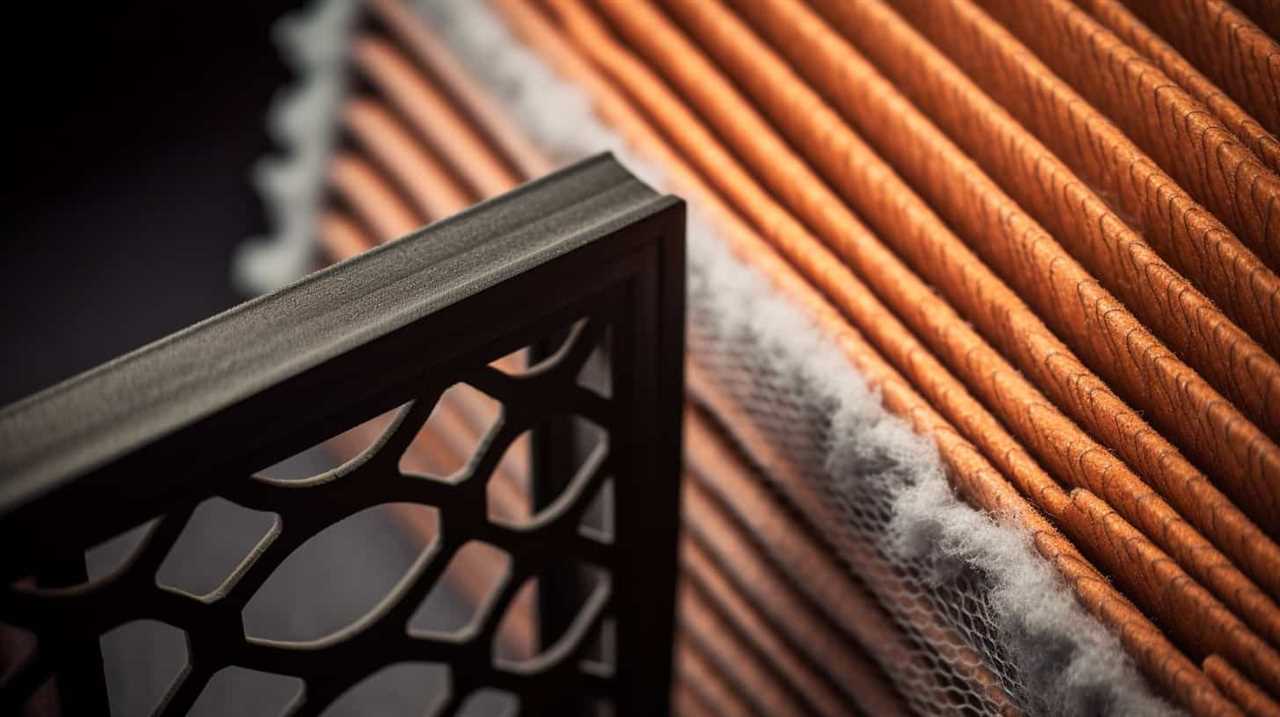
What Are the Potential Cost Savings of Using a Heat Pump Compared to Traditional Heating Systems?
Potential energy savings are significant when using a heat pump compared to traditional heating systems. It is a cost-effective option that reduces environmental impact by utilizing renewable energy sources, making it an efficient choice for residential heating.
Are There Any Environmental Benefits to Using a Residential Heat Pump?
There are significant environmental benefits to using a residential heat pump. It reduces greenhouse gas emissions and lowers our carbon footprint. Additionally, heat pumps are highly energy efficient, helping to conserve resources and protect the environment.
Conclusion
In conclusion, efficient residential heat pump installation requires careful site assessment, proper sizing and selection, and precise ductwork design.
It’s crucial to ensure correct electrical connections and wiring, as well as proper installation of indoor and outdoor units. Refrigerant line installation and insulation should be done accurately, and thorough testing and commissioning are essential.

Finally, educating customers and providing post-installation support are crucial for their satisfaction. For example, a recent case study showed that implementing these steps resulted in a 20% reduction in energy consumption for a homeowner in XYZ city.



